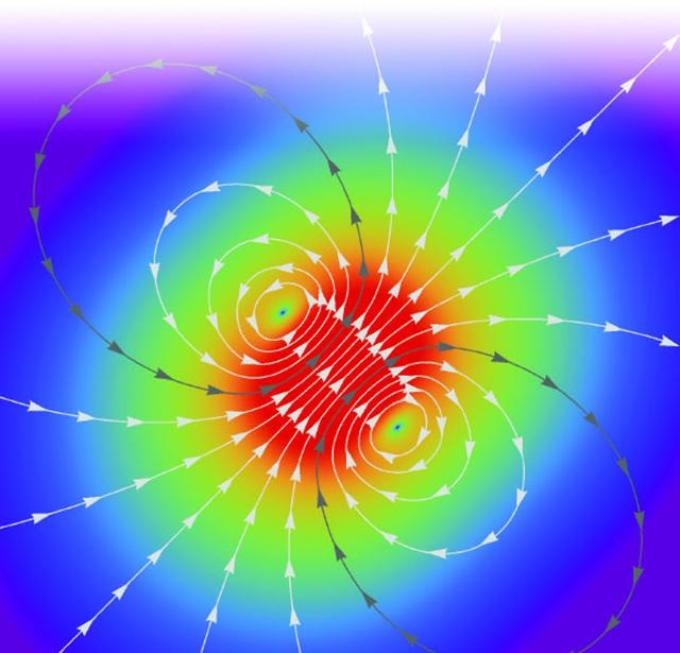Mar 9 2017
 The proposed UI probe stimulates magnetic moments (aligned electrons) in the material being studied, which then act upon the magnetic field of the probe itself and thus can be measured.(Image courtesy of Michael Flatte.)
The proposed UI probe stimulates magnetic moments (aligned electrons) in the material being studied, which then act upon the magnetic field of the probe itself and thus can be measured.(Image courtesy of Michael Flatte.)
A team of researchers at the University of Iowa have proposed a new method to detect and measure materials that emit weak magnetic signals or do not have a magnetic field at all. They suggested using a noninvasive probe to stimulate a magnetic response in the material being analyzed and then detect how that reaction changes the probe’s own magnetic field.
The method has several promising real-world applications, including producing more sensitive magnetic resonance imaging (MRI) machines, manufacturing more efficient computer processing units (CPUs), and building high-speed-storage memory in the semiconducting industry.
This approach is designed to measure the situation where if you didn’t have the probe nearby, you’d see nothing. There wouldn’t be any magnetic fields at all. It’s only the probe itself that’s causing the presence of the magnetic fields.
Michael Flatté, Professor, University of Iowa
The probe performs this by forming “magnetic moments” in materials that otherwise would give off a weak magnetic field or contain no magnetic field at all. Magnetic moments take place when a group of electrons orient themselves in the same direction, similar to tiny compass needles pointing towards one direction, say, north.
That uniform orientation develops a miniature magnetic field. Iron, for instance, creates a strong response as several of its electrons become oriented in the same direction when it comes across a magnetic force.
All that the probe requires to form a magnetic moment, is for two of its six electrons to change to the same directional orientation. When that occurs, the probe triggers sufficient electrons in materials possessing weak or nonexistent magnetic fields to re-orient themselves, forming a magnetic moment in the material - or just enough of one - that the probe can identify.
How the magnetic moment of the material impacts the probe’s own magnetic field is measurable, which offers scientists the opportunity to measure the physical dimensions, such as thickness, of the material.
These electrons (in materials with weak or nonexistent magnetic fields) have their own field that acts back on the probe and distorts the probe (in a way) that you can then measure.
Michael Flatté, Professor, University of Iowa
This becomes vital when attempting to capture the dimensions of magnetic layers that are sandwiched or hidden between nonmagnetic layers. Such situations crop up when using semiconductors and will increase as computer processing progresses.
“We calculate the magnetic response, and from that we would know where the magnetic fields end and thus know the layer thickness,” Flatté says.
The concept draws inspiration from an emerging sampling strategy called nitrogen-vacancy center magnetometry. This strategy, which depends upon an introduced defect in a diamond’s crystal structure (substituting a nitrogen atom for two carbon atoms), is partially effective as the probe it uses (like the proposed UI probe) is made of diamond, which forms small magnetic moments crucial to identifying magnetic fields in the materials being analyzed.
However there is a disadvantage: Nitrogen-vacancy center magnetometry only functions with magnetized materials, which eliminates superconductors as the magnetic field stops to exist at specific temperatures, and several other materials. Flatté and co-author Joost van Bree’s projected solution overcomes that by employing the probe to form a magnetic field that forces materials with nonexistent or weak magnetic fields to respond to it.
If you apply a magnetic field to a superconductor, it will attempt to cancel that magnetic field applied to it. Even though it’s doing that, it creates a magnetic field outside of itself that then affects the spin centers. That’s what then can be detected.
Michael Flatté, Professor, University of Iowa
The research was funded by the U.S. Air Force’s Office of Scientific Research, through a Multidisciplinary University Research Initiative grant to Flatté.